Computational Fluid Dynamics (CFD) Blog Posts

Using the Inflow Boundary Condition in Nonisothermal Flow Simulations
Nonisothermal flow is a multiphysics problem, as it combines CFD and heat transfer analysis. Learn how to implement the Inflow boundary condition when simulating these types of scenarios.

Comparing Static and Dynamic Wall Heat Exchangers with Simulation
We compare the performance and efficiency of static and dynamic compact wall heat exchanger designs using fluid-structure interaction.

Modeling the Flow of Ice in COMSOL Multiphysics®
The dynamics of glaciers are a complex (and “cool”) subject to study. One method is by using fluid flow simulation to analyze the flow of ice, from accumulation to ablation.
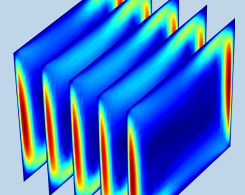
Simulating Natural Convection in Air with COMSOL Multiphysics®
From small electronic components to large buildings, natural convection is a transport phenomena found in engineering disciplines of all sizes. Here’s an example of natural convection in air.
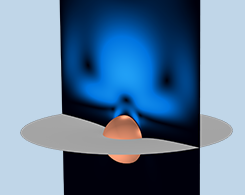
Modeling a Sphere Falling on a Water Surface
Get the theory behind a quintessential CFD problem, the oscillating motion of a buoyant sphere, as well as step-by-step instructions for modeling it in COMSOL Multiphysics®.
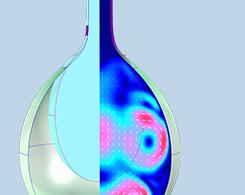
How to Model Fluid-Structure Interaction in a Water Balloon
They’re not just for playing games in the backyard: Water balloons are also an example of fluid–structure interaction in a nonlinear elastic material. Learn how to model this effect…

Optimizing a Microlens Design for Optogenetics Applications
Optogenetics is a field of study that could shed light on neurology and memory. To design an optimized microlens for optogenetics uses, these researchers turned to multiphysics simulation.
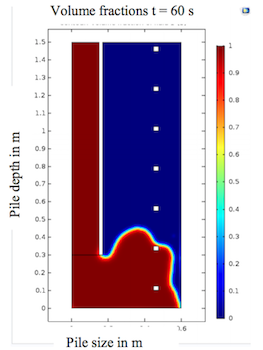
Analyzing Concrete Flow in Drilled Shafts with CFD Simulation
Researchers from the University of Florida used CFD simulation to analyze concrete flow in drilled shaft designs in order to optimize these deep foundation elements.
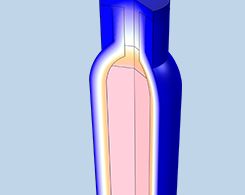
Predicting How Long Coffee Stays Warm in a Vacuum Flask
Do you use a vacuum flask to keep your coffee or tea warm? Try simulating the natural convection cooling in one of these containers to see exactly how long your beverage will stay warm.
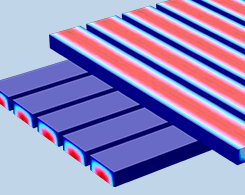
How to Save Computational Time with a One-Way Coupling Approach
Simulating heat transfer in fluids with forced convection can be very computationally expensive. Did you know that you can save a lot of time and resources with a one-way coupling approach?
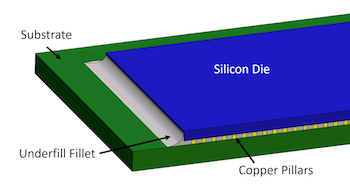
Simulating the Thermocompression Bonding of an Underfill Adhesive
Underfill adhesives are often used in microelectronics to hold different components together. Simulate the thermocompression bonding process of such an adhesive to ensure its effectiveness.

Finding the Ideal Thickness for the Insulation of a Pipeline
Pipelines need to be properly insulated in order to transport products like petroleum and natural gas across long distances. Use COMSOL® to find the ideal thickness for a pipeline insulation.
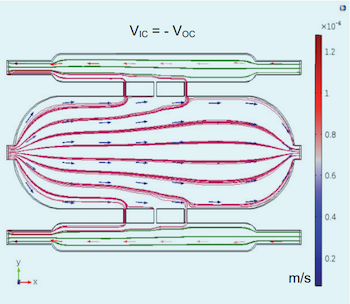
Simulating Cancer Cell Migration in Microgravity with COMSOL®
Researchers used multiphysics simulation to determine how microgravity effects the migration of metastatic cancer cells. Their results could have new implications for therapy and treatments.
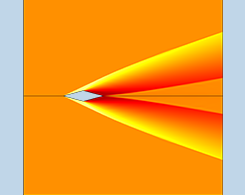
How to Model Supersonic Flows in COMSOL Multiphysics®
Learn about the different types of sonic flow and how to calculate the angle and Mach number of a shock wave in order to model the supersonic flow around an object, such as a diamond airfoil.
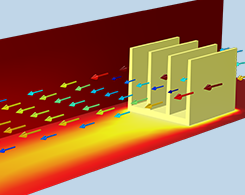
Comparing 2 Approaches for Modeling Electronic Chip Cooling
We go over 2 modeling approaches for electronic chip cooling problems. 1 way models the solid parts and a Convective Cooling boundary condition, while the other option includes an air domain.

Efficiently Analyze Acoustic Streaming with Multiphysics Modeling
Acoustic streaming is when sound waves are used to generate steady fluid motion. You can use multiphysics modeling for an efficiency way to analyze this phenomenon.
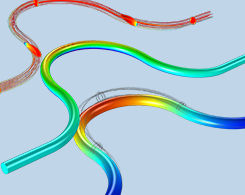
Modeling Aeroacoustics with the Linearized Navier-Stokes Equations
Get a comprehensive introduction to aeroacoustics modeling, as well as the linearized Navier–Stokes equations and how to implement them in COMSOL Multiphysics®.
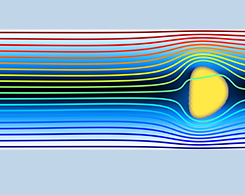
Investigating the Behavior of an Ancient Organism with CFD Simulation
Researchers used CFD simulation to study the behavior of an ancient organism called the Parvancorina in order to learn more about the ecosystem of the Ediacaran period, 635–541 million years ago.
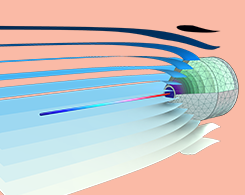
Analyzing a Probe Tube Microphone Design with Acoustics Simulation
Probe tube microphones are an important component in hearing aids. Learn about how you can use acoustics modeling to analyze the design and predict the performance of these devices.
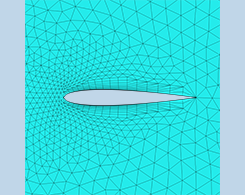
Which Turbulence Model Should I Choose for My CFD Application?
Modeling turbulence in the COMSOL® software? Find out which turbulence model you should use, depending on your CFD modeling scenario.
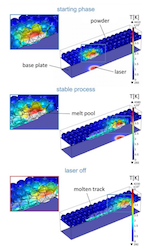
Analyzing Laser Beam-Matter Interaction in Selective Laser Melting
Selective laser melting is a common and important process in many types of manufacturing. You can model the interaction between the laser beam and matter for a closer look at this process.

Why Should I Use Automatic Wall Treatment for My CFD Modeling?
The automatic wall treatment functionality enables you to use low Reynolds number models for a wider range of CFD problems, but there are some factors to consider before implementing the feature.
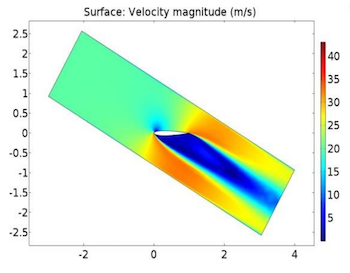
Improving Vertical-Axis Wind Turbine Efficiency with CFD Simulation
Vertical-axis wind turbines are easier to install and maintain than horizontal-axis devices, but they also have low peak efficiencies and struggle with starting torque. Enter CFD simulation.

How to Model Heat and Moisture Transport in Porous Media with COMSOL®
Modeling the transport of heat and moisture in porous media, like building envelopes and other construction materials, is a simple process with a predefined Heat and Moisture Transport interface.
